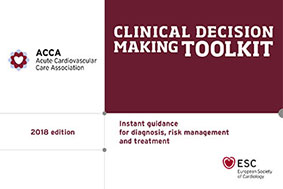The activation of the renin-angiotensin-aldosterone system (RAAS) plays a key role in the development and progression of cardiovascular disease, especially in arterial hypertension, heart failure and coronary artery disease. ACE inhibitors are the most used and studied type of RAAS blocker and their benefits are due to their neurohormonal modulatory effects, which have vasodilatory, anti-inflammatory, plaque-stabilizing, antithrombotic and anti-proliferative effects.
ARBs have similar pharmacological properties to ACE inhibitors but may be better tolerated as coughing is not a frequent adverse effect. As ARBs are more expensive and have not shown any additional clinical benefits over ACE inhibitors, they are usually considered as an alternative for ACE inhibitors intolerant patients.
ACE inhibitors and ARBs share most indications and contraindications:
- Indications for ACE inhibitors/ARBs
- Hypertension (HTN), alone or in combination with diuretic or calcium-channel blocker
- Heart failure or asymptomatic left ventricular dysfunction
- Secondary prevention of coronary artery disease
- Diabetes mellitus and diabetic nephropathy
- Contra-indications for ACE inhibitors/ARBs
- Severe aortic stenosis
- Severe hyperkalaemia
- Symptomatic hypotension
- Renovascular hypertension (bilateral renal artery stenosis or stenosis of the artery to a single functioning kidney)
- Pregnancy
- Angio-oedema
- ACE inhibitors/ARBs are not contraindicated, but should be used with caution for:
- Moderate renal insufficiency (serum creatinine <3 mg/dL)
- Mild hyperkalaemia (K+ <5.5 mEq/L)
- Asymptomatic hypotension
- Practical tips & tricks on when and how to change from ACE inhibitors to ARBs
- When RAAS blockade is indicated, ACE inhibitors should be used as first-line treatment
- There are currently no compelling indications for the use of ARBs routinely as first-line treatment
- The combination of ACE inhibitors/ARBs is contraindicated in the vast majority of patients
- When RAAS blockade is needed but ACE inhibitors are not well tolerated due to a persistent dry cough, ARBs can be considered as an alternative (ARBs should be avoided as an alternative to ACE inhibitors in patients who develop severe renal insufficiency or hyperkalaemia as adverse effects of this treatment)
- In case of a switch from ACE inhibitors to ARBs, it seems reasonable to stop ACE inhibitors and start ARBs the following day at an equivalent dose.
| Drug | Indications | Dose | Dose adjustments | Comments |
|---|---|---|---|---|
| ACE inhibitors | ||||
| Ramipril | HF, HTN | Start: 2.5 mg oral QD Target dose: 5 mg BID |
CrCl < 40ml/min: start 1.25 mg QD, max 5 mg/daycaution in elderly and hepatic impairment |
Check renal function, electrolytes and drug interactions:
Common adverse effects: dry cough, hypotension, deterioration of renal function, hyperkalaemia. |
| Captopril | HF | Start: 6.25 mg oral TID Target dose: 50 mg TID | CrCl > 50 ml/min: 75-100% of the normal dose CrCl 10-50ml/min: 25-50% CrCl < 10ml/min: 12.5% |
|
| HTN | Start: 12.5 mg oral BID Target dose: 25-50 mg TIDMax 450 mg/day | |||
| Enalapril | HF, HTN | Start: 2.5 mg oral BID Target dose: 10-20 mg BID | CrCl 30-80ml/min: start 5 mg/day CrCl 10-30ml/min: start 2.5 mg/day |
|
| Lisinopril | HF | Start: 2.5-5.0 mg oral QD Target dose: 20-35 mg QD | CrCl 31-80ml/min: start 5-10 mg/day CrCl 10-30ml/min: start 2.5-5 mg/day CrCl < 10ml/min: start 2.5 mg/day |
|
| HTN | 10-20 mg oral QD Max: 80 mg QD | |||
| Perindopril | HF | Start: 2.5 mg oral QDMax: 5mg QD | CrCl > 60ml/min: start 5 mg/day CrCl 31-60ml/min: start 2.5 mg/dayCrCl 15-30ml/min: start 2.5 mg alternate days CrCl < 15ml/min: start 2.5 mg/day on the dayof dialysis |
|
| HTN | Start: 2.5-5 mg QD Target dose: 10 mg QD | |||
| Trandolapril | HF | Start: 2.5 mg oral QD Max: 5mg QD |
CrCl > 60ml/min: start 5 mg/day CrCl 31-60ml/min: start 2.5 mg/dayCrCl 15-30ml/min: start 2.5 mg alternate days CrCl < 15ml/min: start 2.5 mg/day on the dayof dialysis |
|
| HTN | Start: 2.5-5 mg QD Target dose: 10 mg QD |
|||
| ARBs | ||||
| Candesartan | HF, HTN | Start: 4-8 mg oral QD Target dose: 32 mg QD |
if renal or hepatic impairment: start 4 mg/day |
Check renal function, electrolytes and drug interactions:
Monitor renal function and serum potassium closely after drug initiation and uptitration. Common adverse effects:hypotension, deterioration of renal function, hyperkalaemia |
| Losartan | HF | Start: 50 mg oral QD Target dose: 150 mg QD |
CrCl < 20ml/min: 25 mg QD caution if hepatic impairment |
|
| HTN | 50-100 mg oral QD | |||
| Valsartan | HF | start: 40 mg oral Bid target dose: 160 mg Bid |
if mild-moderate hepatic impairment: max dose 80 mg/day | |
| HTN | >80-160mg QD | |||






 Our mission: To reduce the burden of cardiovascular disease.
Our mission: To reduce the burden of cardiovascular disease.